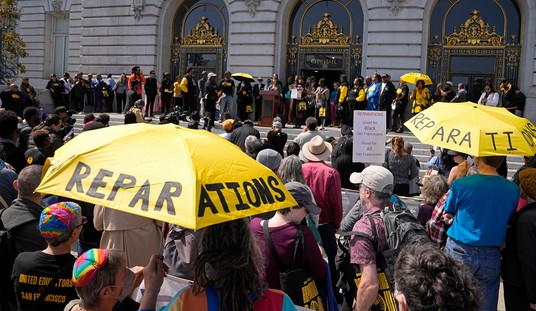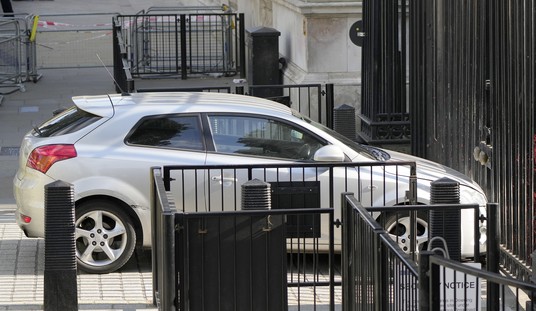U.S.-Mexico Border — It's easy to forget just how chaotic the border area just below San Diego was prior to consistent security infrastructure being put in place during the 1990s. On a recent tour with U.S. Customs and Border Protection, Townhall was shown how the agency was able to secure its portion of the over 2,000-mile border.
Though its the smallest sector for the southwest, the agents working in the 60-mile region have to deal with the benefits that the Pacific Ocean and the vast urban environment of neighboring Tijuana provide to human smugglers and drug runners.
In 1986, border patrol apprehended almost 1.7 million immigrants illegally crossing into the United States, with San Diego Sector (SDS) agents apprehending upward of 600,000 people despite being the smallest section. A significant factor in having large numbers of people crossing from Tijuana was due to the lack of physical infrastructure, which allowed large groups to congregate and overwhelm agents.
In the mid-1990s, physical barricades made up of 8-to-10 foot high scrap metal fences were installed, allowing border patrol to reclaim the Chula Vista area. The main reason for installing the Vietnam-era barricades was so drivers could not use their vehicles to cross the border, as it was common for them to simply drive back across if they were spotted by American authorities.
Since it was designed to mainly stop vehicle incursions, it was only afterward that the wall's flaws in preventing foot traffic were noticed. Not only was it relatively easy to climb over, the metal was solid, so American border agents could not see through and assess if, or how many, people were planning to climb over.
Recommended
This led to parts of the SDC to be replaced with mesh wire fencing, where authorities can now see through, but it's still easy for smugglers to cut sections out. Using cheap power tools, immigrants are able to cut through the fence in under a minute.

(Wire mesh fencing with patched up cuts. Credit: Julio Rosas/Townhall)
That is why the sector is being completely overhauled with a primary and secondary barrier system with steel bollards. Each bollard is filled with concrete and rebar. The primary wall is situated on the side closest to Mexico and stands at 18 feet tall and boasts anti-climbing plates. The secondary wall is closest to the United States and is 30 feet tall with the same anti-climbing plates.
Compared to the mesh wire fencing, it can take up to an hour for smugglers to cut through, thereby giving border agents more time to respond and apprehend or stop those attempting to cross.
As of November 11, SDC agents have made over 4,900 apprehensions for Fiscal Year (FY) 2020. In FY 2018, SDC agents made 38,591 arrests, while in FY 2019, the same year as the migrant caravans, SDC agents arrested 58,049 people.
Funding for the primary wall, which replaced approximately 14 miles of the scrap metal fence, was appropriated by Congress in the 2017 fiscal year. The $147 million contract for that project was awarded on April 18, 2018, and the project was started on May 31 of 2018. It was completed in August of this year.
The project for the secondary wall, which is still in the process of being built, was awarded on December 20, 2018. Costing approximately $131 million and using border patrol fiscal year 2018 appropriations, construction started in February of 2019. While now mostly made up of the 30-foot tall fencing, the secondary wall still has sections that are either open or consist of a mix of the old barriers. The project is expected to be completed in early 2020.
The new project also saw the installment of secondary fencing in places where there was only one fence as recently as 2017 along the border.

(Secondary fencing still under construction. Credit Julio Rosas/Townhall)
With the installment of the new barriers, U.S. Border Patrol spokesman Theron Francisco said the area has experienced a slight increase in water-borne incursions. Some drug runners have even made it up as far as San Fransisco with their contraband by using the ocean. Though much more difficult, some people still use ladders that look like something MacGyver put together in order to climb over. In the past year, two tunnels were also discovered.

(Homemade ladder used by border crossers. Credit: Julio Rosas/Townhall)
The tour also included passing by the San Ysidro Port of Entry, which was the scene of numerous migrants rushing the border in an attempt to make it across. Border patrol had to use tear gas to force those rushing to turn back.
The busy port of entry and the surrounding area was shut down so it could be secured to ensure no one else tried to run across. Border patrol said the nearby Las Americas Shopping Mall, a hotspot for both American and Mexican nationals, lost an estimated $5 million in business.
Francisco explained with the sector's multifaceted approach, it would be a great starting point to model the rest of the border off of in regions where it would be applicable:
- A primary and secondary fence
- An "enforcement area" in between the fencing
- All-weather roads
- Light posts
- Camera towers
- Underground sensors
The SDC is currently manned with around 2,000 agents, but it's expected to get an additional 400 in the coming months. Francisco said agents understand there is no such thing as an unbreakable barrier, but in combination with technology, infrastructure, and manpower, they hope to further deter illegal border crossings or stop immigrants before they make it across.
"Infrastructure works and the San Diego Sector proves it," he said.

























